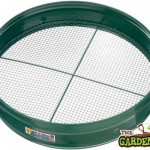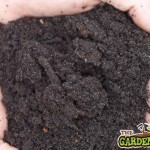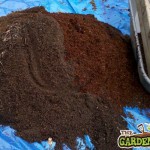Successful seedlings need good contact between soil and seed coat. When growing herbs and vegetables from seed it is always recommended that you use potting compost. What really make potting compost different from other standard composts is the fine and fluffy texture of its constituents. The fine particles of potting compost sit tightly around and hug the seeds allowing for better water contact and improved nutrient uptake for the seedling’s young roots. This fine textured soil can also be created by using a garden sieve.
- Garden Sieve
- Loam Soil
- Potting soil & Seive
The Garden Sieve is a simple device that has bee used for many years for different purposes. Whether you want to clear debris from gravel, separate sand and gravel, remove cut worms or other pests from soil or for searching for gold in waterways the sieve has been in use.
Today we can use to sieve to create the ideal growing conditions for seeds and seedlings, even your garden soil mixed with a general compost and put through a garden sieve will create the conditions necessary for good growth.
The Sieve will separate out all the larger and unmanageable sized fragments and leave you will a fine crumbly soil with a good tilth, ideal for seed beds, seed trays and pots.
The nutrient content of a potting compost is generally a bit lower than that of a general compost. This is basic seeds and seedlings don’t require as much nutrients and food as larger plants and fully grown vegetables. With that in mind, if you are using a general compost that you have sieved, you can mix it with your garden soil, perlite or vermiculite as these will bulk up your growing medium without adding additional nutrients.
Most garden sieves come with two or more meshes, allowing you to sieve down your soil to various degrees of fineness. To use it, first mix your general compost and perlite or vermiculite together in a bucket. I generally mix 3 parts compost to 1 part perlite. Next place the sieve over your seed trays and add handfuls of the soil mix into the sieve. Move the soil mix around the sieve allowing the smaller fragments fall through and dispose of the larger fragments to your garden borders.
The end result will be a potting mix with the best texture while also having a reduced nutrient level. This will give your seedlings the best start in life. Once large enough the seedlings can then be transplanted out into a large pot and into a general compost which hasn’t been sieved.


